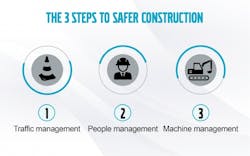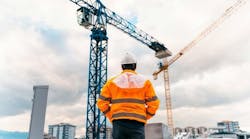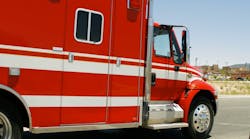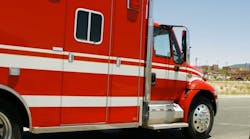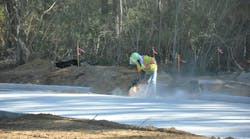It has been estimated that 60 percent of all fatalities on sites can be attributed to choices made before work begins, and the root cause of many of these tragedies is traced back to the misalignment between site materials, equipment, and processes.
The folks at Volvo Construction Equipment say the answer to this dilemma is a coordinated approach to safety that involves good site layout and rules, well trained site personnel, and properly maintained and operated construction equipment. This can be implemented through a simple three-step plan: traffic management; people management; and machine management.
- Traffic management
The foundation of creating safer sites is effectively coordinating the movement of people, materials, and machinery. After thousands of construction site inspections last year, the UK’s Building Safety Group reported a 74-percent rise in traffic management breaches—an increase they claimed was behind the majority of construction-related accidents.
A large part of making this traffic flow safer is establishing a management plan that gives the safest passage between places where vehicles and people operate. It is a good idea to avoid sharp or blind bends and to set sensible speed limits. Obstructions should be protected, and berms may be needed to prevent machines running over open edges. The quality of site roads should be suitable for the vehicles using them; firm, even, properly drained, and without steep slopes. Reversing should be minimized and tightly controlled.
- People management
It’s obvious that all staff on site, regardless of how long they are going to be there, should be highly visible, wear PPE, and be made aware of the dangers present. The young and/or inexperienced are most at risk. Workers in their first year of employment account for almost two thirds of all construction accidents, so no shortcuts should be made on site safety education. A ‘”no blame/no fault” culture should also be encouraged, where no one feels the need to hush up minor accidents or ‘near misses’, and everyone feels empowered to contribute ideas on how to improve safety.
- Machine management
Safety is no longer an optional extra when it comes to construction equipment design. Many accidents involving machines are “slip and trip” incidents, so the simple solution is to provide an entry/exit system that allows good foot and handholds, effective step treads, and entry that is wide and not too steep. Also, if you can keep the technician on the ground rather than climbing all over the machine when servicing, you reduce the risk of a fall. Placing service points that are accessible from the ground is simple and effective.
Providing safe design involves a package of features. ROPS/FOPS cab protection, seat belts, good lighting, minimal blind spots, and reduced vibration (and noise) all play their part. But so too does a clear view of the work area and comfortable working conditions.
Technology is already playing an important part in keeping worksites safe, and this will increase significantly. Reversing alarms and cameras have been around a while, and the next generation involves similar tools in systems with a series of cameras fitted on machines. They give the operator a virtual bird’s eye view around the entire machine, displayed on an in-cab monitor.
This is just the start. The industry is now working on proximity systems that identify people or obstructions in the path of the machine and take corrective action, thereby helping to prevent collisions. And just like in the automotive sector, research into semi- or completely autonomous equipment is advancing at a rapid rate.
